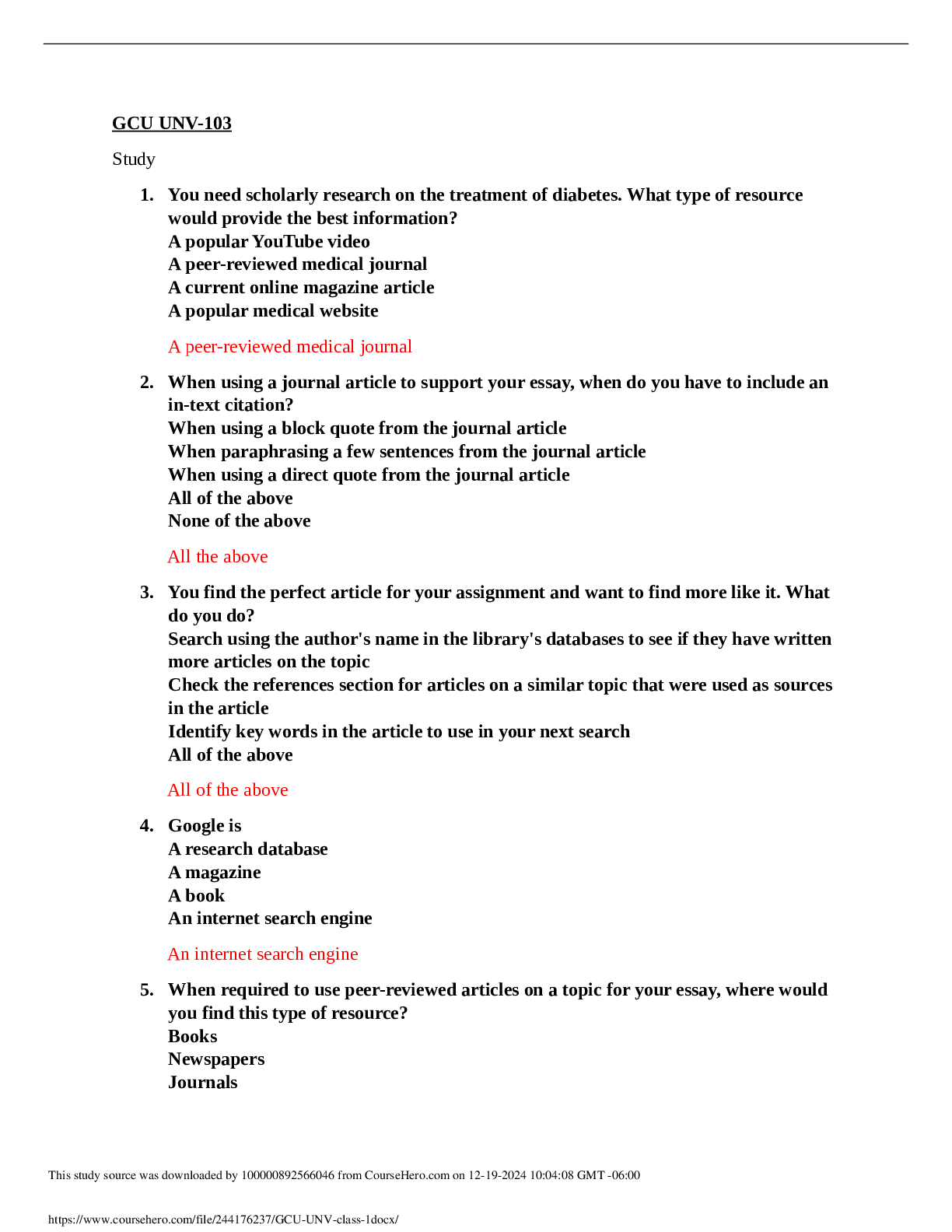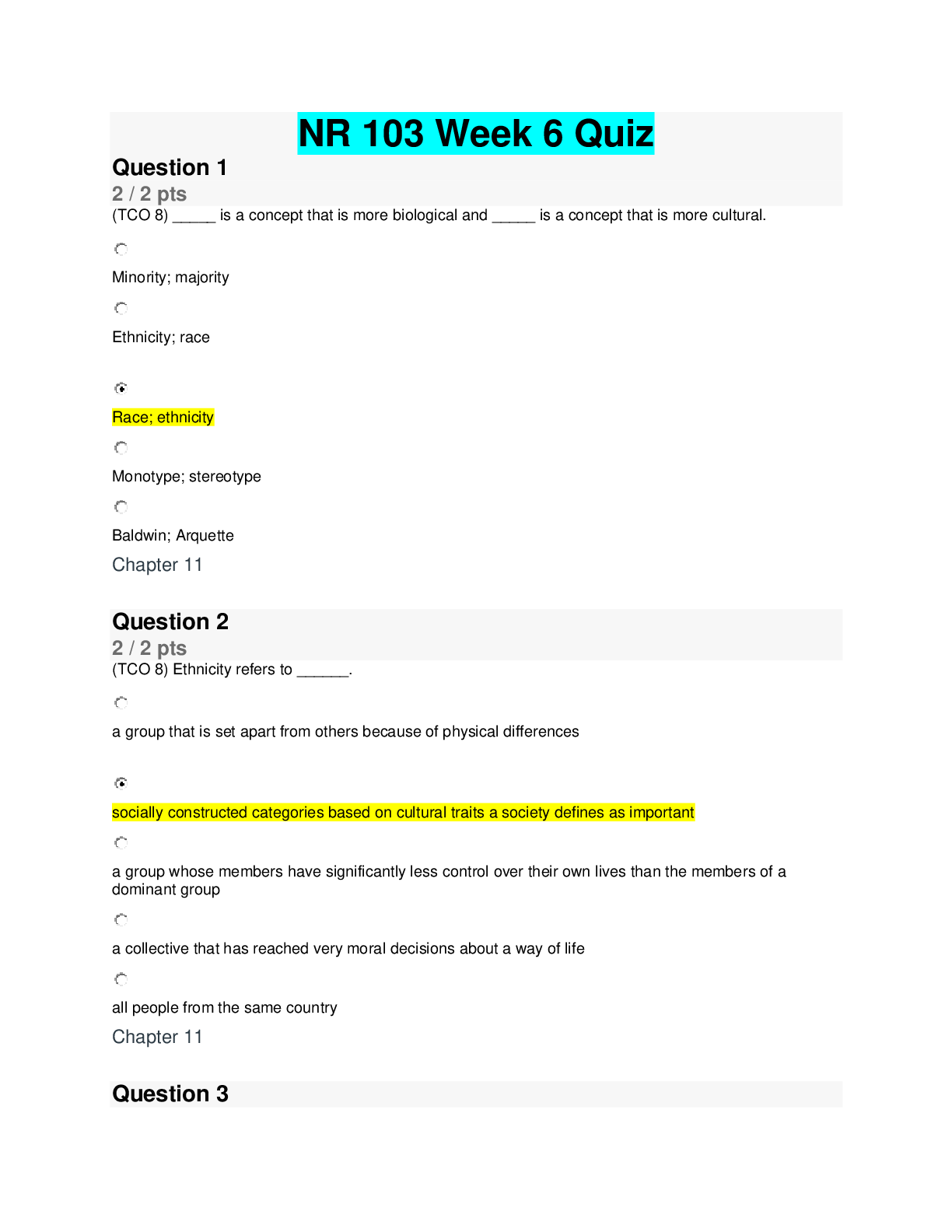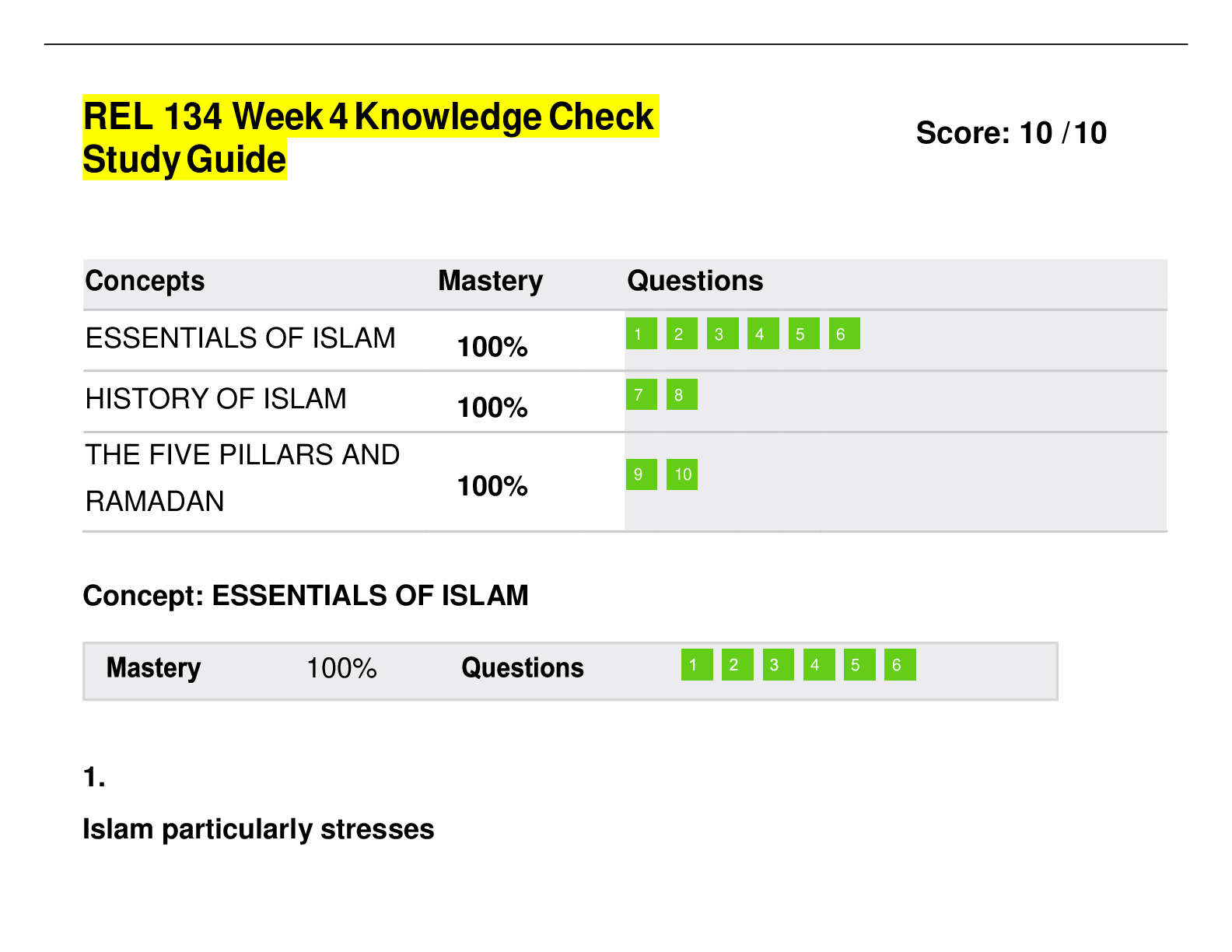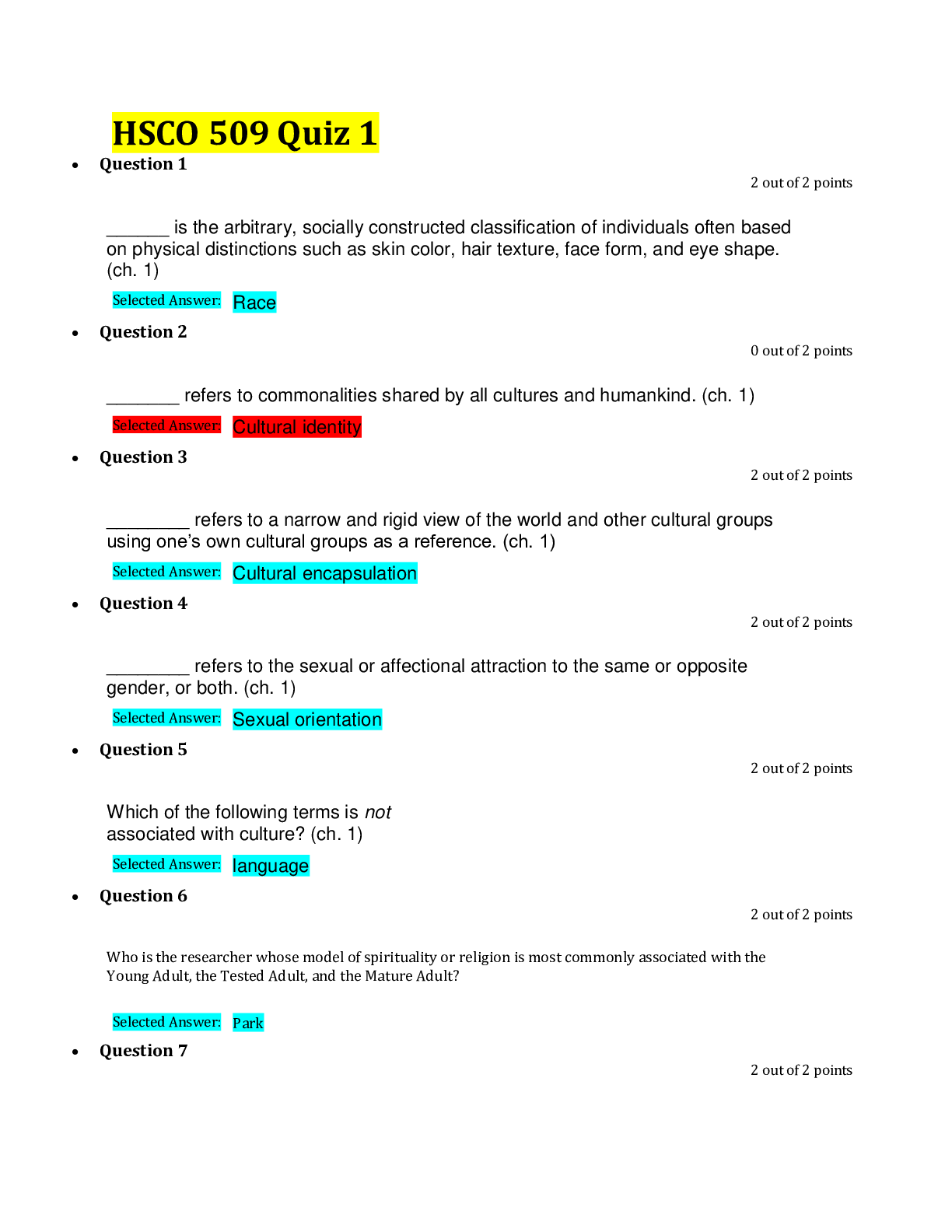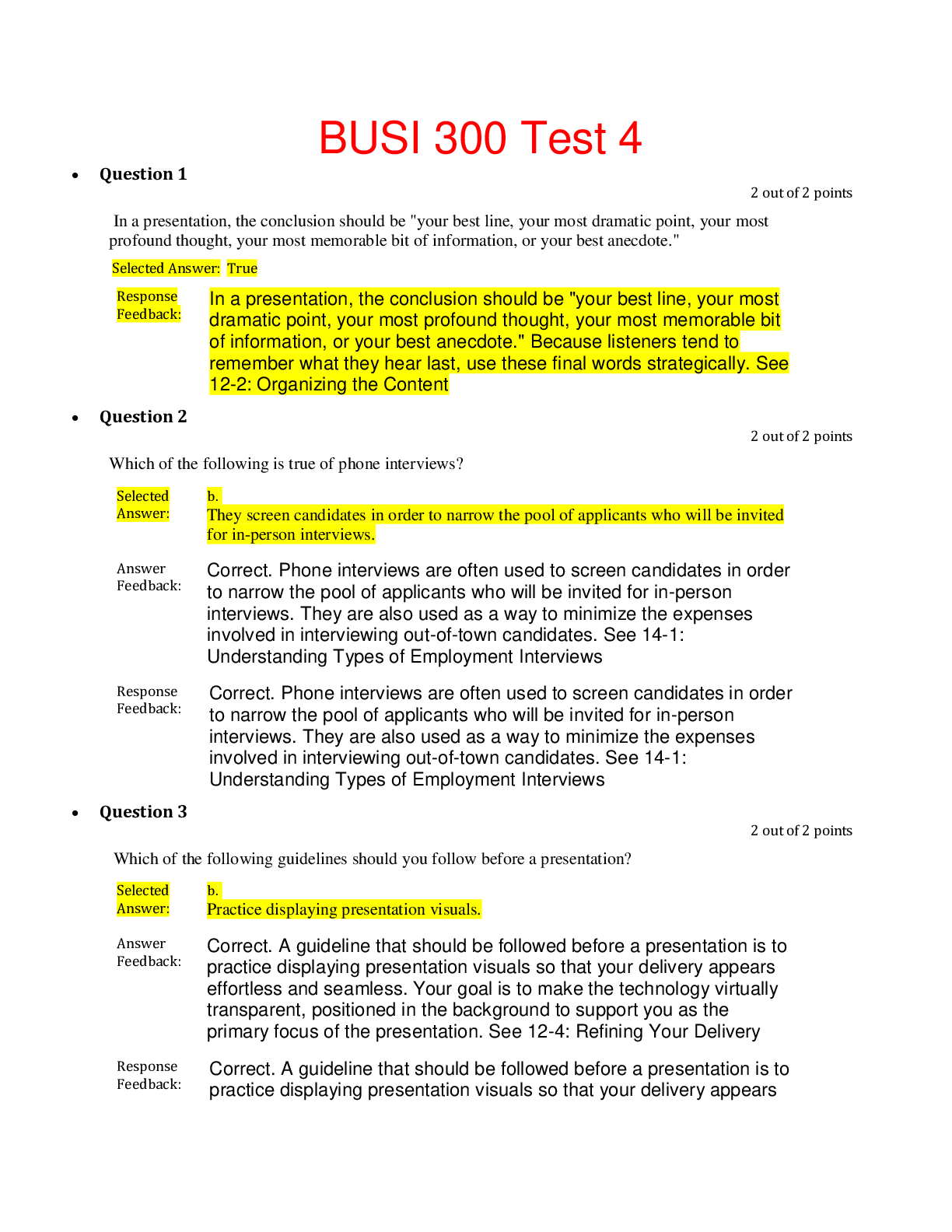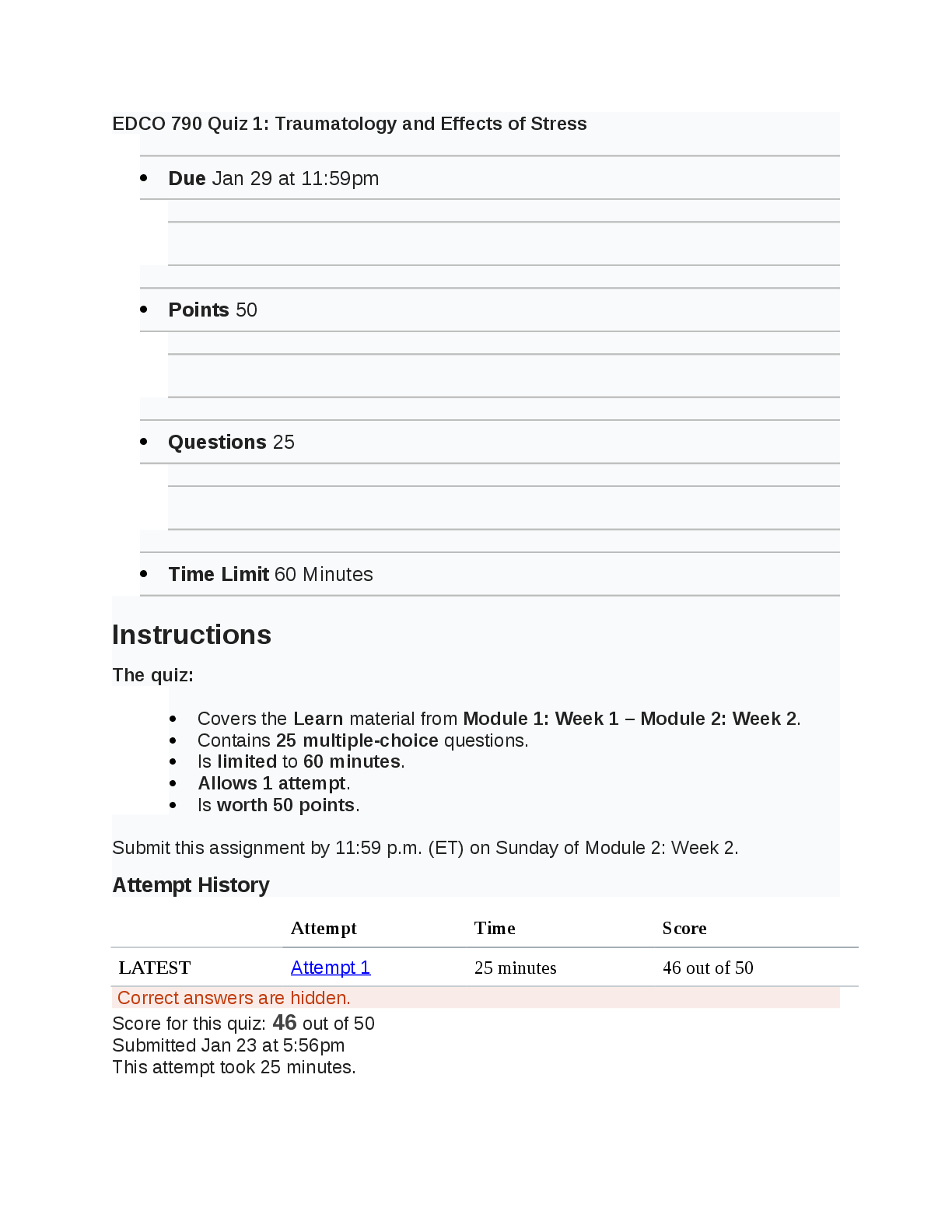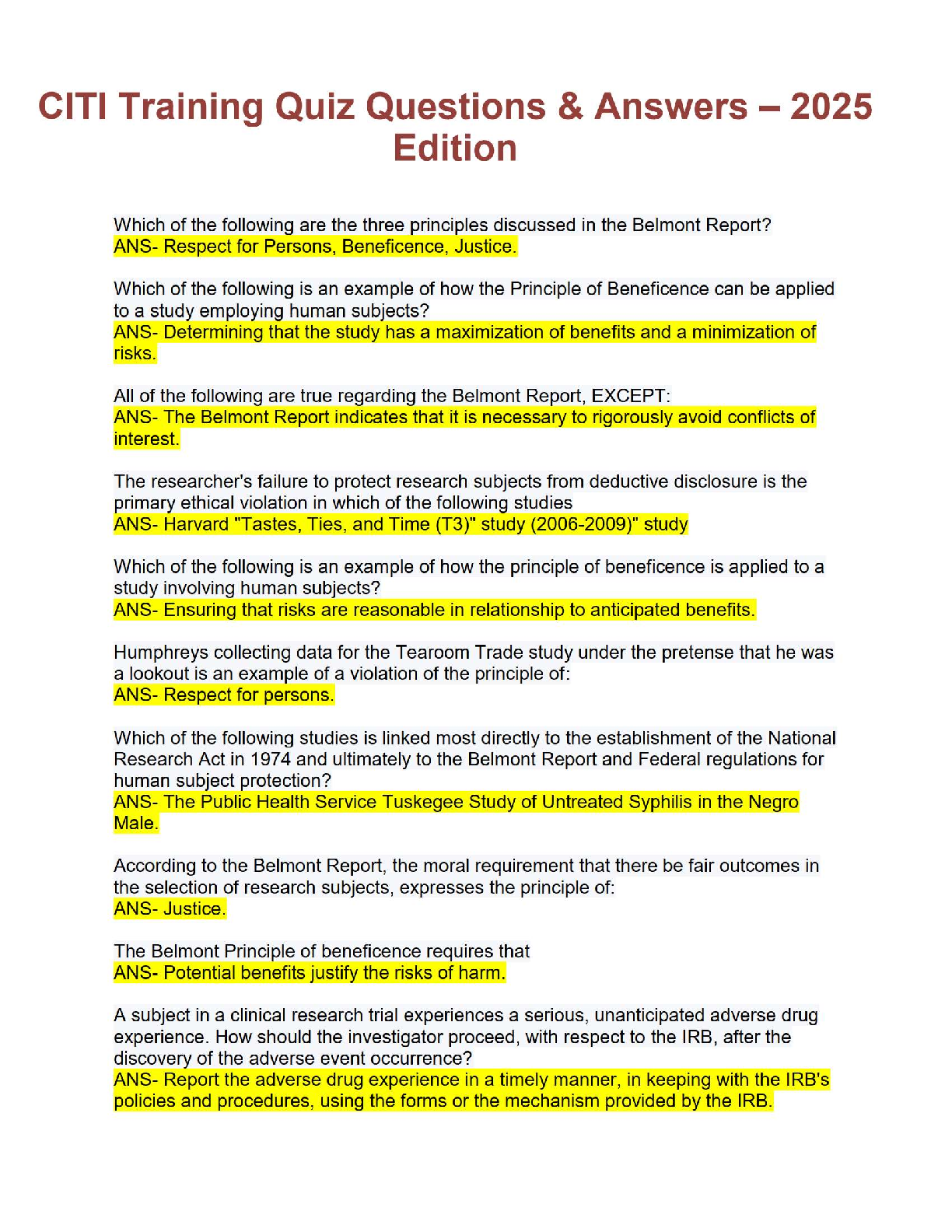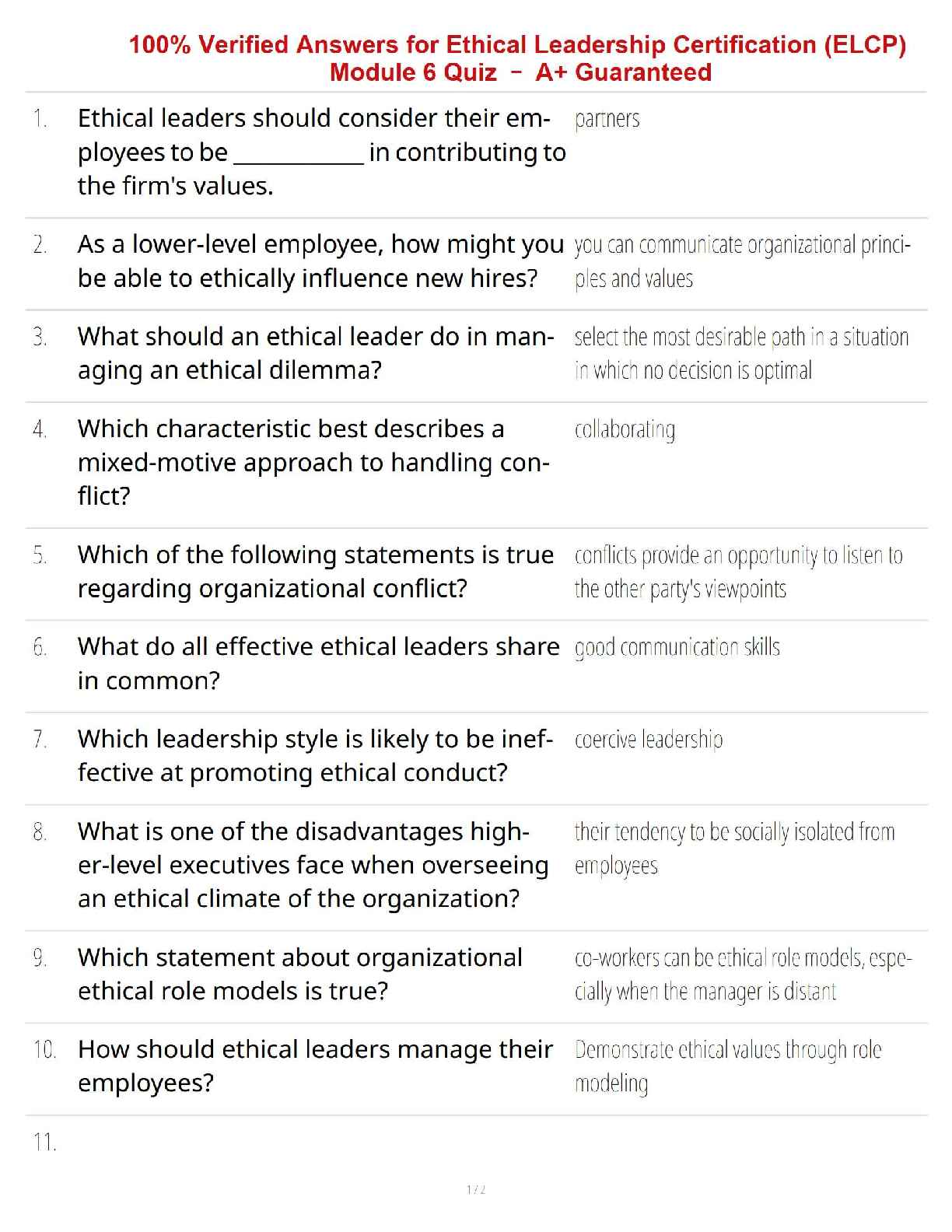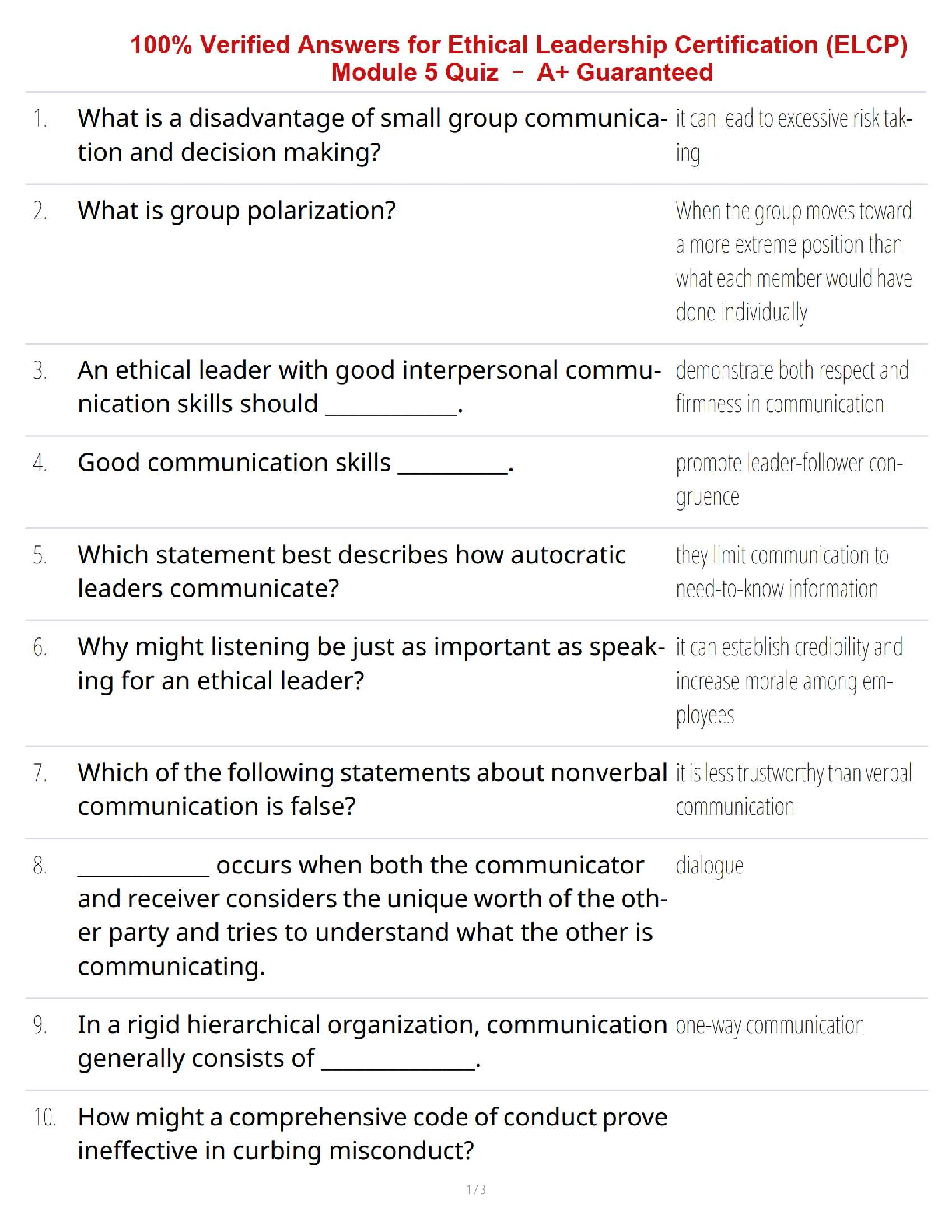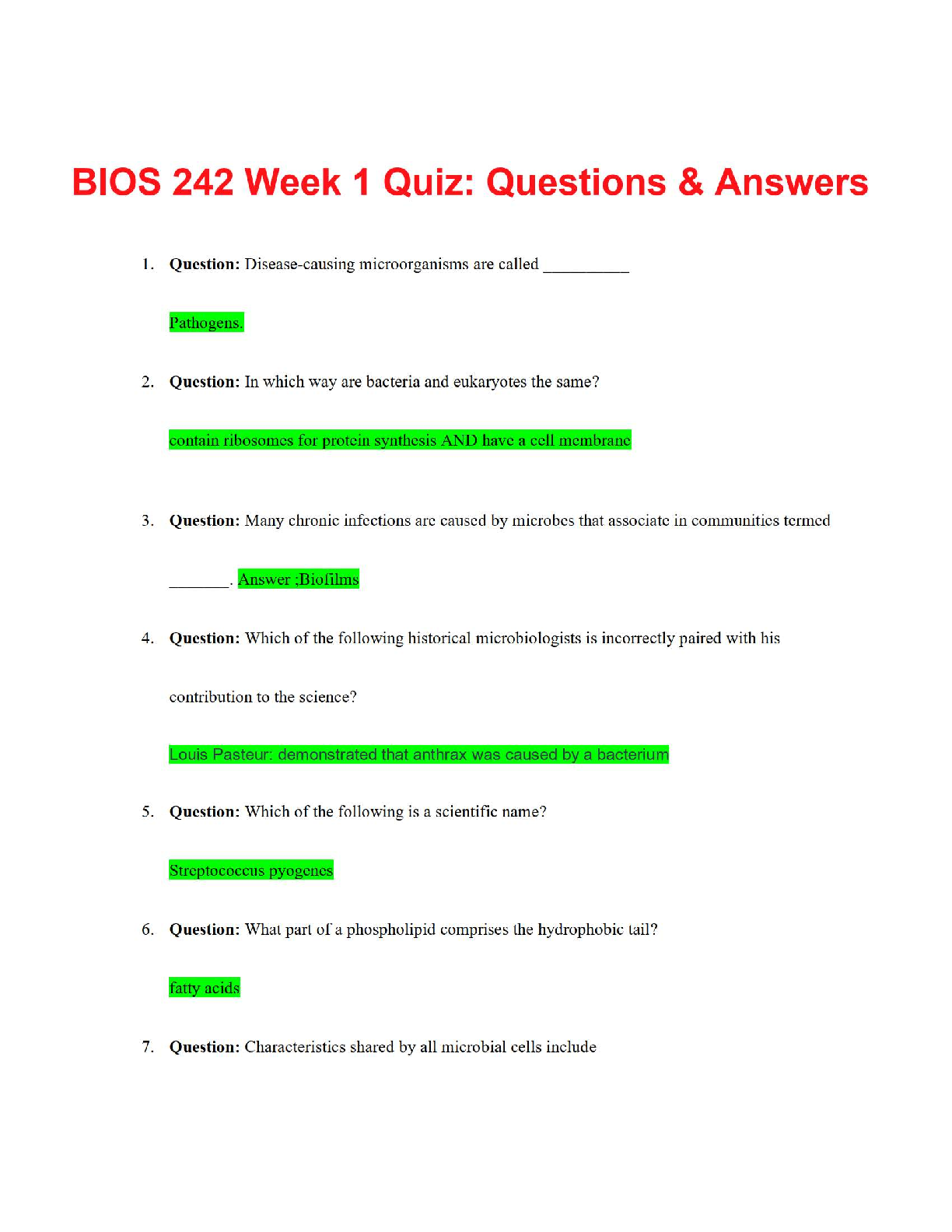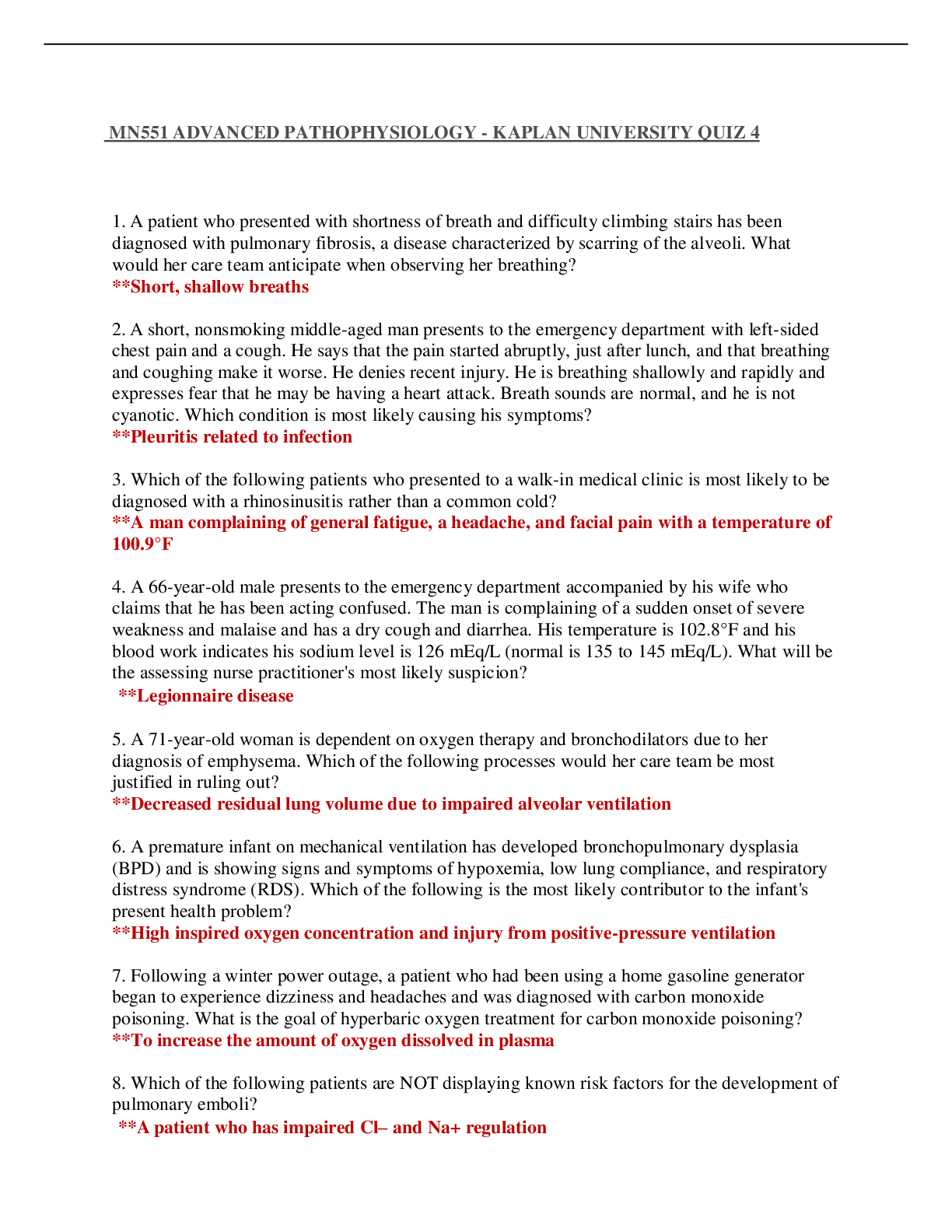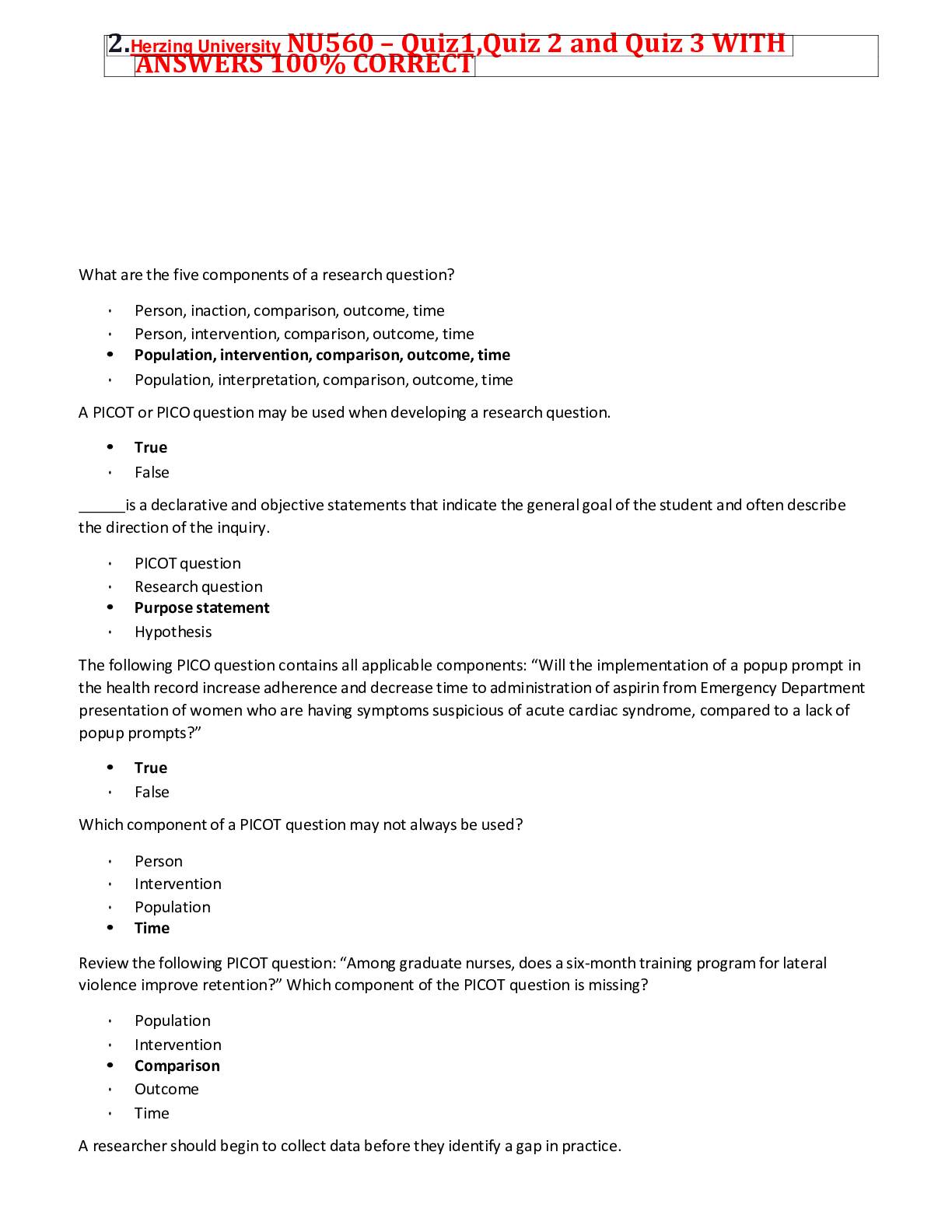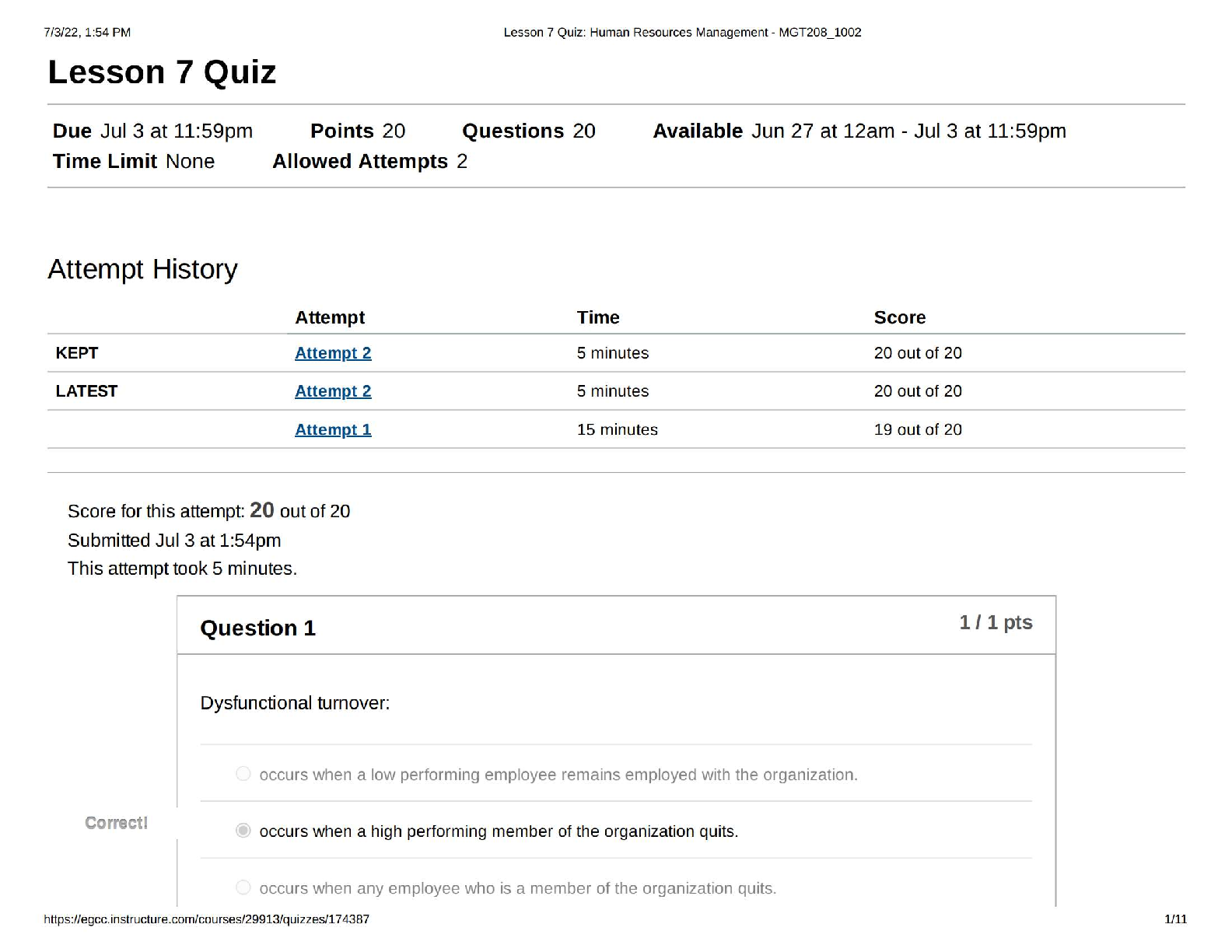NR 103 Week 6 Quiz | Complete Answers correct.
Document Content and Description Below
NR 103 Week 6 Quiz Question 1 2 / 2 pts (TCO 8) _____ is a concept that is more biological and _____ is a concept that is more cultural. Minority; majority Ethnicity; race Correct! ... Race; ethnicity Monotype; stereotype Baldwin; Arquette Chapter 11 Question 2 2 / 2 pts (TCO 8) Ethnicity refers to ______. a group that is set apart from others because of physical differences Correct! socially constructed categories based on cultural traits a society defines as important a group whose members have significantly less control over their own lives than the members of a dominant group a collective that has reached very moral decisions about a way of life all people from the same country Chapter 11 Question 3 2 / 2 pts (TCO 6) The unequal treatment of various categories of people is known as stereotyping. ethnocentrism. Correct! discrimination. segregation. active prejudice. Chapter 11 Question 4 2 / 2 pts (TCO 5) Scapegoat theory states that prejudice is created by cultural beliefs. high levels of immigration. Correct! frustration among disadvantaged people. people with rigid personalities. somebody else, but not me. Chapter 11 Question 5 2 / 2 pts (TCO 8) Which concept refers to attitudes and activities that a society links to people of each sex? Primary sex characteristics Sexual orientation Correct! Gender roles Secondary sex characteristics Gender norms Chapter 10 Question 6 2 / 2 pts (TCO 8) What is the form of social organization in which females dominate males? Patriarchy Correct! Matriarchy Monarchy Oligarchy Matrimony Chapter 10 Question 7 2 / 2 pts (TCO 8) According to intersection theory, _____ is a source of social disadvantage. only gender only race only class only the lonely Correct! gender, race, and class Chapter 10 Question 8 2 / 2 pts (TCO 8) Which type of feminism accepts the basic organization of U.S. society, but seeks to give women the same rights and opportunities as men? Correct! Liberal feminism Socialist feminism Radical feminism Moderate feminism Libertarian feminism Chapter 10 Question 9 2 / 2 pts (TCO 7) Which of the following statements applies the symbolic-interaction approach to schooling? Correct! If teachers think some category of students is superior, those same students may end up doing superior work. Teachers convey specialized knowledge that children are not likely to learn at home. Some categories of students are tracked into better classes than others. Schools are intended for learning, but they also are places where many people meet their eventual partners. Wealthy families have more options for their children’s education. Chapter 14 Question 10 2 / 2 pts (TCO 3) _____ and _____ theories explain that families perpetuate social inequality in U.S. society through inheritance of private property, encouraging patriarchy, and passing on racial and ethnic inequality. Feminist; functionalist Social-exchange; feminist Social-exchange; interactionist Global; internationalist Correct! Feminist; social conflict Chapter 13 Question 11 (TCO 3) What is the term for the study of the distribution of health and disease in a society’s population? Demography Sociology of medicine Sociology of health Correct! Social epidemiology Social pathology Chapter 14 Question 12 (TCO 7) The sandwich generation refers to people in their Wonder Bread Years. the “Baby Bust” – those between the Baby Boom and the Echo of the Baby Boom. Correct! middle-aged adults who spend as much time caring for elderly parents as for their own children. young adults – those caught between the adolescents and the middle-aged baby boomers. the generation of people raised on fast food. Chapter 13 Question 13 (TCO 7) A religious organization that stands apart from the larger society is a _____, while a _____ is a religious organization that is largely outside a society’s cultural traditions. church; sect Correct! sect; cult cult; church denomination; cult cult; sect Chapter 13 Question 14 (TCO 7) Which of the following is a correct criticism of the structural-functional approach to religion? Ignoring the effects of religion in everyday life. Ignoring how religion provides meaning in everyday life. Correct! Ignoring religion’s ability to generate social conflict. Ignoring the positive consequences of religion for society. Ignoring Satan’s influence on the material world. Chapter 13 Question 15 (TCO 3) The problem of functional illiteracy means that Correct! many young people leave school without having learned basic skills. many older people have forgotten the lessons they learned in school. a significant share of U.S. children never attend school. people have fewer problems than those who are nonfunctionally illiterate. many teachers in U.S. schools do not know how to teach. Chapter 14 Question 16 (TCO 3) In his structural-functional analysis, Talcott Parsons claimed that society responds to illness by punishing ill people. withholding treatment to those who need it most. Correct! using the "sick role" to relieve ill people of many daily responsibilities. forcing people, sick or not, to perform important work. blaming the patient for their own illness. Chapter 14 Question 17 (TCO 5) Capitalism is an economic system in which Correct! there is private ownership of property. all property is communally owned, and no social distinctions are made on the basis of people’s ability to produce. the means of production and distribution are collectively owned. there is a private/public partnership in the production of goods and services. the rich are exploited by the poor. Chapter 12 Question 18 (TCO 5) Concerning the issue of personal freedom, capitalist systems emphasize people’s _____, while socialist systems emphasize people’s _____. collective needs; personal needs freedom from basic want; freedom to pursue their self-interest Correct! freedom to pursue their self-interest; freedom from basic want social needs; material needs social needs; private needs Chapter 12 Question 19 (TCO 5) The Marxist political-economy model suggests that power is no longer concentrated in the hands of a few. Correct! an anti-democratic bias exists in the capitalist system. power is widely dispersed throughout society. many people do not vote because they are satisfied with the political system.. that the only justice in the halls of justice is in the halls. Chapter 12 Question 20 (TCO 5) Which of Weber’s types of authority is also know as bureaucratic authority? Egalitarian authority Charismatic authority Traditional authority Correct! Rational-legal authority Representative authority Chapter 12 [Show More]
Last updated: 11 months ago
Preview 2 out of 10 pages

Loading document previews ...
Buy this document to get the full access instantly
Instant Download Access after purchase
Buy NowInstant download
We Accept:

Reviews( 0 )
$7.50
Can't find what you want? Try our AI powered Search
Document information
Connected school, study & course
About the document
Uploaded On
Feb 27, 2020
Number of pages
10
Written in
All
Additional information
This document has been written for:
Uploaded
Feb 27, 2020
Downloads
0
Views
168

